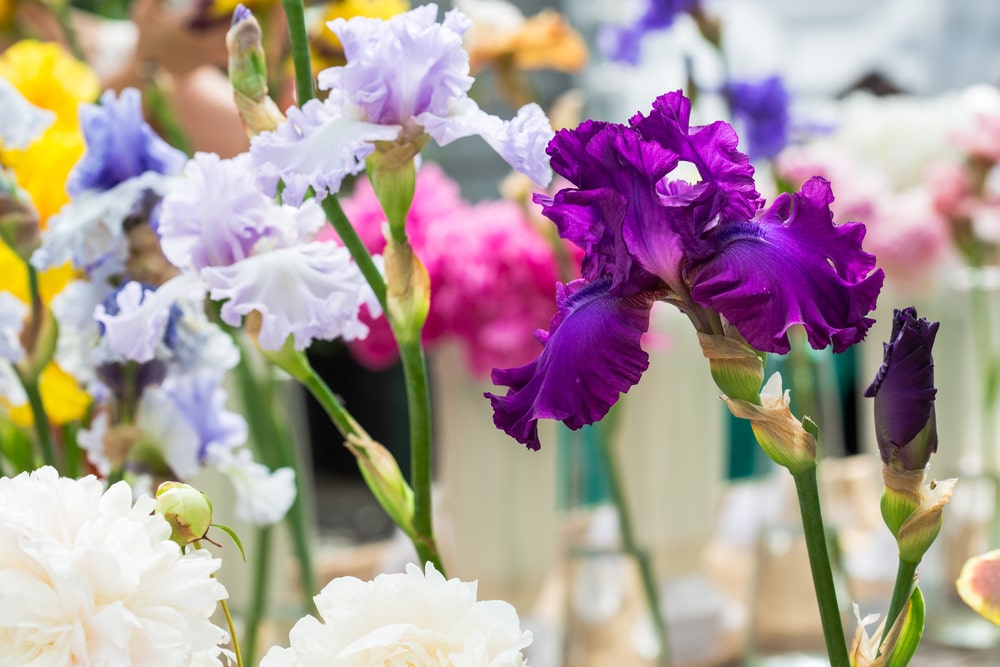Bearded Iris – How Did They Get That Name?
Bearded irises are perennial, and they are both bulbous types and rhizomes. All iris are native to the Northern Hemisphere from Europe to Asia.
Iris flowers consist of three upright petals called standards and three drooping petals called sepals. Bearded Iris earned that name because of the fuzzy beard that runs halfway down each sepal. The beards are often bright gold or yellow—offering a vivid contrast to the color of the flower.
How to Grow Bearded Iris
Iris are sturdy and easy to grow, needing only a sunny spot with well-draining soil. Bulb iris and rhizomatic iris are available in late summer/early fall. Depending on the variety, they will bloom anytime from May to mid-late June, and some varieties, called Remortant or Rebloomers, will bloom a second time in late summer.
To plant Bearded rhizomatic Iris, choose a sunny spot. The rhizomes come with roots and a fan of leaves at the top. Plant the stem with the fan up and the roots down at the soil surface. The top of the rhizome needs to be exposed to light and air. Be sure to top dress with Espoma Organic’s Bulb-tone. Check the top of the rhizome periodically over the winter and clean away any debris that gathers.
What to Do in the Spring
When new growth appears in the spring, top dress again with Bulb-tone. Bearded irises don’t need much attention after they bloom—keep dead leaves or debris out of the bed, as they can encourage root rot. Irises don’t like inground sprinklers, by the way, as they can keep them too wet.
So Nice Some Can Bloom Twice
There are bearded iris called remontant or rebloomers that bloom again at summer’s end. If you have rebloomers, fertilize them lightly after they bloom the first time and keep them watered over the summer, remembering to let them dry out partly in between. I plant my rebloomers separately from my regular Bearded Iris because once they finish blooming, they can go drier and do need to be fed again like rebloomers.
Other Types of Iris
Bulbous irises, also called Dutch irises, are smaller than Bearded irises, so they take up a little less space and are suitable for adding late spring color where space is a bit more limited. Miniature iris bulbs are also available. They bloom far earlier than other iris—often in March and are daintier—usually six to eight inches tall. Like Bearded Iris, both Dutch iris and miniatures prefer full sun and well-drained soil.
Not only are Iris tough, durable, and perennial, but they are not usually bothered by pests, which is very important here in Deer Country.
Your Iris Rainbow Awaits!
Come in and check out our selection and pick out a rainbow.

